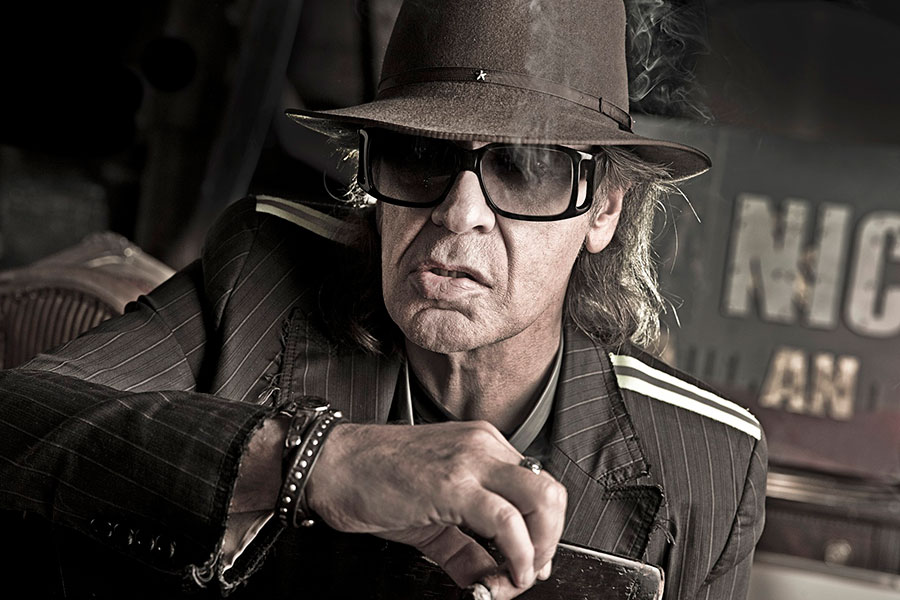Udo Lindenberg first came to my attention thanks to Benjamin von Stuckrad-Barre. I’ve read many of the books and writings of the author/journalist and if there’s one thing he loves, it’s Udo Lindenberg. He is a devoted fan and eventually became a close friend of the musician who left a mark on his childhood that never left.
With more than forty years in music and dozens (literally) of albums under his belt, Udo Lindenberg is a great musician you should get to know. Although his unique vocals can sometimes be a bit of a challenge for German language learners, don’t let it discourage you. Lindenberg’s music is fun and classic.
So, without further ado, let’s learn German with the music of Udo Lindenberg!
Get to Know Udo Lindenberg
Udo Lindenberg was born on May 17, 1946, in the German city of Gronau, along the border with the Netherlands. He is the second of four children of a family that clearly has some creative genes as his brother, Erich, was an artist.
Already in his teens, Lindenberg was interested in music. He showed a propensity for percussion, often drumming on everyday objects. At 15, while training as a waiter at a luxury hotel, he became the drummer for a band in Düsseldorf. A couple of years later, in the early 1960s, he found himself in Libya, playing music in various clubs at American military bases. With this experience, he returned to Germany to study music in Münster and played with a band called Die Mustangs.
Lindenberg’s musical ambitions took a brief break as he completed his mandatory military service. However, once the requirement was filled, he wasted no time. He moved to Hamburg in the late 1960s where he played in several bands, including founding the jazz-rock group Free Orbit. Although he served as the group’s drummer, he also served as the singer for more than half of the tracks on the group’s first record.
In the 1970s, Lindenberg finally came into his own. He continued to work on a number of projects (including groups named Passport and Emergency). The music groups saw little success but then he began focusing on his own solo music as well.
Music of Udo Lindenberg
In 1971, an album of English language music called Lindenberg was released. The following year, a German language album Daumen im Wind followed. Neither of the albums saw much commercial success, although “Hoch im Norden” from Daumen im Wind was a minor hit in the north of Germany.
The turning point came in 1973 with the release of the album Alles klar auf der Andrea Doria. Singles from the album like “Andrea Doria” and “Cello” were hits and Lindenberg sold over 100,000 copies. He became the most promising German musician and received the then-largest record contract for a German musician. By this point, he had left the drums far behind as he took the spotlight.
For more than the next decade, Lindenberg released well received albums. In the mid-70s, Ball Pompös, Votan Wahnwitz, Galaxo Gang and Sister King Kong all broke into top ten on the album charts.
Lindenberg never really stopped releasing music. But, commercially, he saw less success starting in the 1990s. This changed, however, in the late 2000s. In 2008, he released Stark wie Zwei. It was his first studio album in eight years and featured collaborations with popular German musicians like Jan Delay, Silbermond, and trumpet player Till Brönner. The album became Lindenberg’s very first number one album.
Three years later, an MTV Unplugged album that was recorded at Hamburg’s Hotel Atlantic (where Lindenberg famously resides). With more guest appearances from young German celebrities, the album helped bring new life to many of Lindenberg’s old hits. There’s a new version of the “Cello” with Clueso that is particularly melodic and mellow, and there’s an ode to Hamburg’s entertainment district “Reeperbahn” with Jan Delay. Both tracks became quite popular and the album went to number one.
2016’s Stärker als die Zeit is Lindenberg’s most recent studio album. It’s also, amazingly, his 36th studio album.
Lindenberg’s Style
Perhaps all you need to know about Lindenberg’s style is time in East Germany. In the 1980s, he released a German version of the American song “Chattanooga Choo Choo” called “Sonderzug nach Pankow.” The track was Lindenberg’s response to the refusal of the East German authorities to let him perform in the country. (Pankow is a section of Berlin.) The track was extremely popular in West Germany and did, ultimately, lead to Lindenberg being able to play a single concert in Berlin less than a year later. However, a full tour of East Germany never materialized.
The story really demonstrates his brashness and tenacity.
Looking for another Ohrwurm to help you learn German? Check out previously featured musicians and bands!
Photo by Tine Acke and used courtesy of Udo Lindenberg’s official website. This post contains affiliate links.

Pingback: German Book Review: Stuckrad-Barre's "Panikherz" - Reverberations